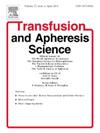T cell subgroup analysis and T cell exhaustion after autologous stem cell transplantation in lymphoma patients
IF 1.4
4区 医学
Q4 HEMATOLOGY
引用次数: 0
Abstract
Background
Autologous stem cell transplantation (ASCT) is a common treatment option for relapsed/refractory (R/R) lymphomas and it is considered standard of care as primary consolidation therapy for some types of Non-Hodgkin Lymphomas (NHL). Although ASCT benefits patients by allowing cytoreduction with intensive chemotherapy and reconstituting with stem cells, the effects of immunological changes in T cell subgroups after ASCT are still poorly understood.
Objectives
We evaluated changes in frequencies of T cell subsets and T cells expressing some of the exhaustion markers (such as LAG-3 and PD-1) from peripheral blood samples before and after ASCT to investigate bone marrow reconstruction and whether exhaustion predicts relapse.
Study design
Blood samples were collected on the day before conditioning and at the 1st, 3rd, and 6th months post-ASCT. Flow cytometry analysis was conducted to examine T cell subgroup composition and exhaustion markers, including PD-1 and LAG-3. Additionally, functional analysis was performed using assays for IFN-g and TNF-a production. Furthermore, a CSFE proliferation assay was utilized to assess proliferation capacity.
Results
In our data set, dominant cells post-transplantation were memory cells, as the naïve cell population did not recover for 6 months. Both single and combined expressions of LAG-3 and PD-1 were found to be high before transplantation, and decreased after transplantation. However, LAG-3 and PD-1 expression increased in the 3rd and 6th month after transplantation respectively. These changes were more evident for the relapsed patients when compared to non-relapsed patients within 3 months follow-up time. Notably, the expression of inhibitory receptors in the relapsed patients was significantly higher at the first month post-transplantation. CD107a+ cytotoxic T lymphocytes (CTL), IFN-g+, TNF-a.+ CTL and T helper lymphocyte (THL) populations significantly decreased in relapsed patients 3rd month after transplantation. Decreased proliferation capacities of CTLs and THLs were also observed in these patients.
Conclusion
These results suggest that increased surface PD-1 and LAG-3 expressions along with functional decline after 3 months of ASCT can be used as prognostic data about the relapse status of transplant patients.
求助全文
约1分钟内获得全文
求助全文
来源期刊
CiteScore
3.60
自引率
5.30%
发文量
181
审稿时长
42 days
期刊介绍:
Transfusion and Apheresis Science brings comprehensive and up-to-date information to physicians and health care professionals involved in the rapidly changing fields of transfusion medicine, hemostasis and apheresis. The journal presents original articles relating to scientific and clinical studies in the areas of immunohematology, transfusion practice, bleeding and thrombotic disorders and both therapeutic and donor apheresis including hematopoietic stem cells. Topics covered include the collection and processing of blood, compatibility testing and guidelines for the use of blood products, as well as screening for and transmission of blood-borne diseases. All areas of apheresis - therapeutic and collection - are also addressed. We would like to specifically encourage allied health professionals in this area to submit manuscripts that relate to improved patient and donor care, technical aspects and educational issues.
Transfusion and Apheresis Science features a "Theme" section which includes, in each issue, a group of papers designed to review a specific topic of current importance in transfusion and hemostasis for the discussion of topical issues specific to apheresis and focuses on the operators'' viewpoint. Another section is "What''s Happening" which provides informal reporting of activities in the field. In addition, brief case reports and Letters to the Editor, as well as reviews of meetings and events of general interest, and a listing of recent patents make the journal a complete source of information for practitioners of transfusion, hemostasis and apheresis science. Immediate dissemination of important information is ensured by the commitment of Transfusion and Apheresis Science to rapid publication of both symposia and submitted papers.

 求助内容:
求助内容: 应助结果提醒方式:
应助结果提醒方式:


